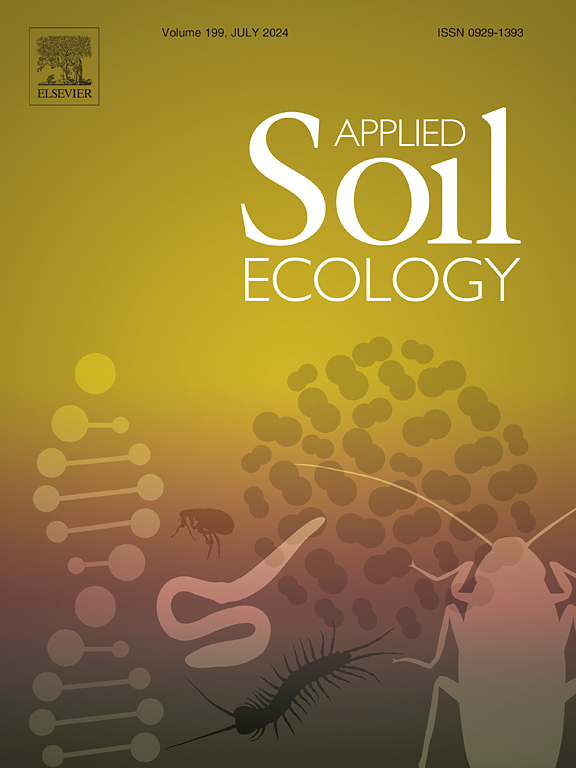Soil microbiome community composition shaped by soil depth in a wetland with diel variations in methane emissions
IF 4.8
2区 农林科学
Q1 SOIL SCIENCE
引用次数: 0
Abstract
Wetlands play a disproportionally important role in the global methane cycle due to their unique hydrological and biogeochemical characteristics. Understanding the complex interplay among microbial communities, habitat and geochemical processes is key for assessing their response to environmental changes and their contribution to greenhouse gas dynamics. This study investigated the spatiotemporal and depth relationships among methane fluxes, soil geochemistry, and microbiome communities in a subtropical wetland using 16S rRNA sequencing, methane flux measurements, and soil profiling. We find that soil chemical properties and methane are linked to the variations in soil microbial communities. However, soil depth is the primary factor structuring microbial communities, with surface soils supporting high abundance of iron-methane cycling microbes and evidence of direct interspecies electron transfer (DIET) pathways. Interconnected processes involving methanogens, syntrophs, sulphur reducing bacteria, and fermentative bacteria were prominent in surface soils, likely facilitating organic matter decomposition and methane production. Variations in diurnal methane dynamics and water chemistry were linked to shifts in the relative abundance of microbial taxa, such as Methylomirabilaceae, Syntrophobacter, and Syntrophorhabdus. Water lilies (Nymphaea sp.) are possibly influencing microbial activity and methane emissions in wetlands by supplying organic matter and oxygen to the soil. Overall, our results show that soils depth drove microbial community, with abiotic (e.g. temperature) and biotic factors (e.g. vegetation) influencing spatiotemporal variation in wetland methane fluxes. Understanding the complex drivers of methanogenesis in wetlands is essential for refining global methane budgets and accurately modelling future climate scenarios in the face of accelerating environmental change.
求助全文
约1分钟内获得全文
求助全文
来源期刊

Applied Soil Ecology
农林科学-土壤科学
CiteScore
9.70
自引率
4.20%
发文量
363
审稿时长
5.3 months
期刊介绍:
Applied Soil Ecology addresses the role of soil organisms and their interactions in relation to: sustainability and productivity, nutrient cycling and other soil processes, the maintenance of soil functions, the impact of human activities on soil ecosystems and bio(techno)logical control of soil-inhabiting pests, diseases and weeds.
 求助内容:
求助内容: 应助结果提醒方式:
应助结果提醒方式:


